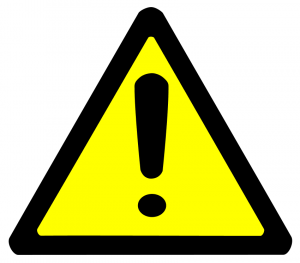 Typically, inspiration arrives unannounced, often from unexpected sources. So it was when I read Michael Dukes’s first professional blog post the other day on Medium. He wrote about how to inspire creative ideas. I tip my hat to a fellow creative and say “thank you” for your inspiration.
Typically, inspiration arrives unannounced, often from unexpected sources. So it was when I read Michael Dukes’s first professional blog post the other day on Medium. He wrote about how to inspire creative ideas. I tip my hat to a fellow creative and say “thank you” for your inspiration.
The creative brief gets the creative ideas started. At its most elementary, a creative brief is an eloquent, focused set of instructions. It can be written for an advertising agency’s creative teams, a small business owner’s marketing team, a firm that hires a couple of talented freelance ad people. Whoever works from a creative brief needs this document to find a spark of an idea that heads her down the right path toward a relevant, insightful creative solution that sells.
Thanks to Michael Dukes’s thoughts on finding those ideas, here are my own thoughts on how to inspire any creative person who needs the best set of instructions possible to achieve her objectives. Notice how similar the points are along both paths.
These four thoughts are minimum requirements before you even begin to write a creative brief:
1. Abandon your comfort zone.
If a creative brief is to succeed in inspiring its readers, it can’t be a rote document. Translation: Cutting and pasting from a previous brief is a mortal sin.
A brief is simply a template that asks for relevant information. If a template lulls you into a rut, change the template. Ask the same questions, but use different words.
If your brief template has 10 blanks to fill in, eliminate unnecessary questions and make the document work harder with fewer words (see #2 below). You could even ask additional questions, as long as they force you to become more deeply focused.
Who says you have to write only one brief per project? There is always more than one way into a creative solution. Creatives are required to present multiple ideas. Creative brief writers should be too. 
Don’t let the template become your prison. Change it regularly to keep it fresh. Creatives who read and work from the document won’t be expecting that. If creatives and account folks collaborate on writing briefs, this idea will be easier to execute.
2. Impose limitations.
This is a favorite mantra. The imagination works harder and more effectively when it is constricted. “Think outside the box” is a stupid cliche. Think not only “inside” the box, but make the box as small as possible. I’ve written about this before. I am likely to return to it.
The creative brief is a reductive exercise. Resist the temptation to fill it up with useless information just to make it seem weighty. How little information can you provide and still spark killer ideas? You’ll never know unless you collaborate with creatives to test your powers of conciseness.
Let this be a kind of “Goldilocks” creative brief test: Keep reducing and editing the document until it’s just right.
3. Make it a struggle (for the creatives, not you)
Tom Jordan, now retired as CEO and Chief Creative Officer at Hoffman York in Milwaukee, gave me some of the best advice of my career when I worked for him in the late 1980s. He said that good creative ideas draw the circle, but don’t complete it.
In other words, they leave just enough unsaid to draw the reader/viewer/listener into the story. You must trust their intelligence to figure out the rest. It’s harder to accomplish that it might seem.
This is excellent advice for creative brief writers, too. The brief’s job is to inspire the work, not do the work. Its purpose is to find the nugget of an insight that will open imaginative doors for creatives.
A good brief makes the creatives grapple with new thinking, not by burying them with useless information, but by handing it to them in an unfinished state.
Easy? No. That’s demonstrated in the dearth of well-written briefs. Don’t let that frighten you.
4. Expectations are low, so you have nothing to lose.
If you’re old enough to remember the comedian Rodney Dangerfield, you recall his famous line: “I get no respect.” He speaks for the creative brief. It’s a document everyone loves to hate. Sad, but true.
 So change that. Start by teaming up: one creative, one account person. Everyone must have skin in the game. Make a pact to raise the bar on expectations. The way to think differently about the creative brief is to, you know, think differently. The process has to begin somewhere.
So change that. Start by teaming up: one creative, one account person. Everyone must have skin in the game. Make a pact to raise the bar on expectations. The way to think differently about the creative brief is to, you know, think differently. The process has to begin somewhere.
Why not you? Why not now?
This isn’t rocket science. This is about fundamental insights and clear thinking, two attributes that all communication professionals possess in abundance.
Dangerous and unpredictable creative should be everyone’s goal. Start with a dangerous and unpredictable creative brief.

